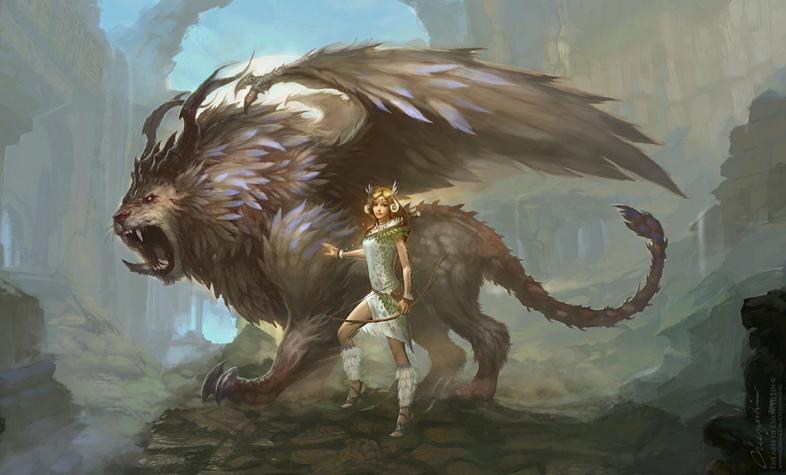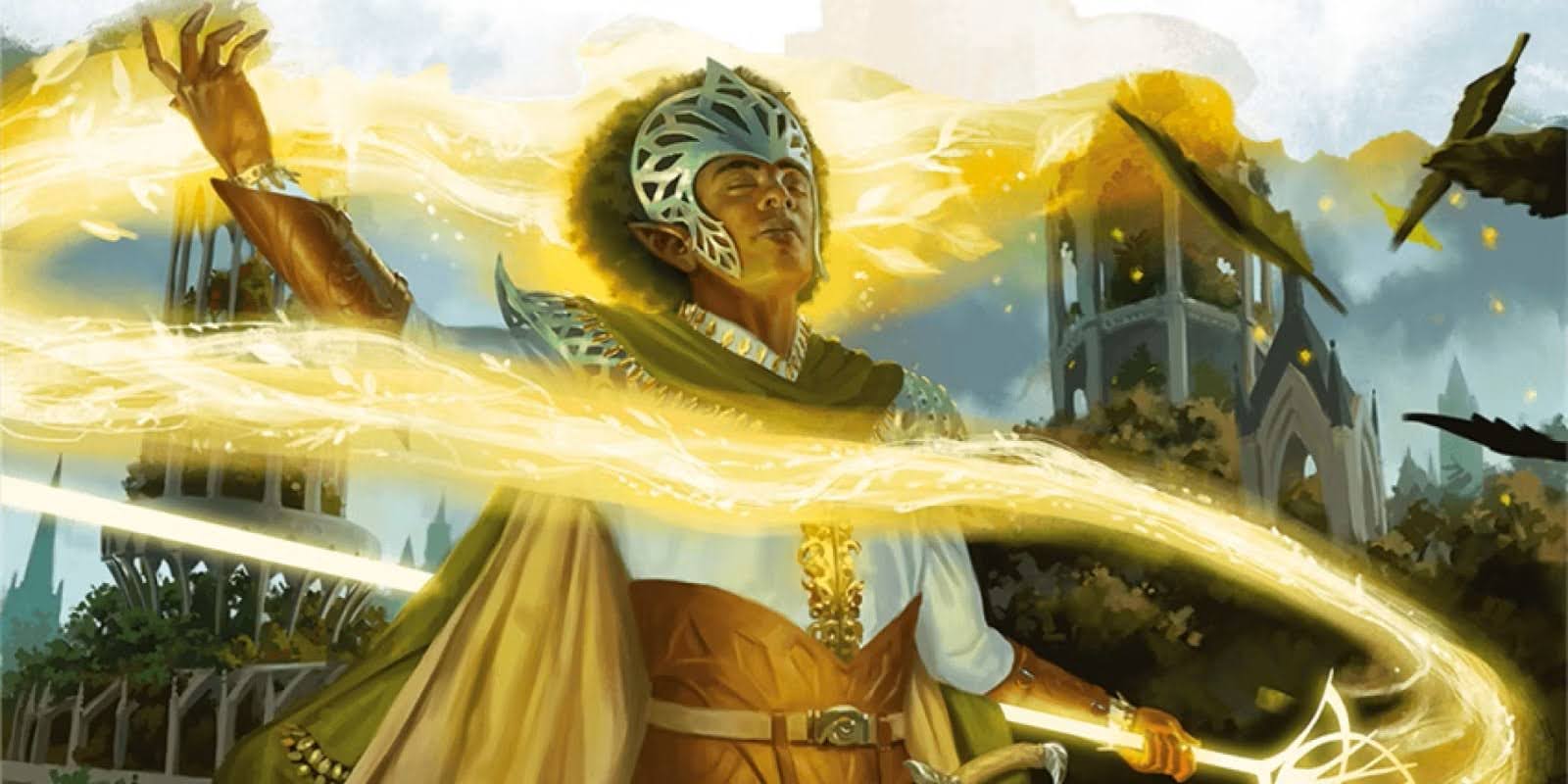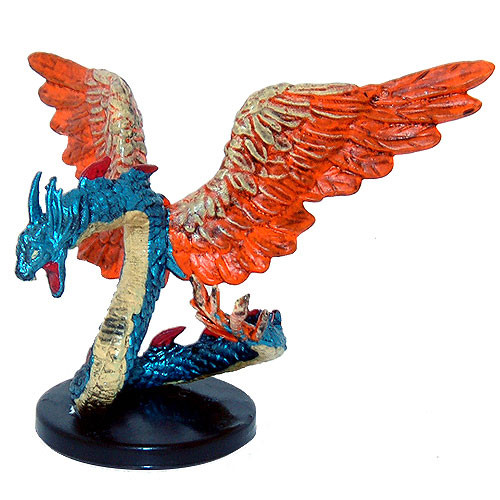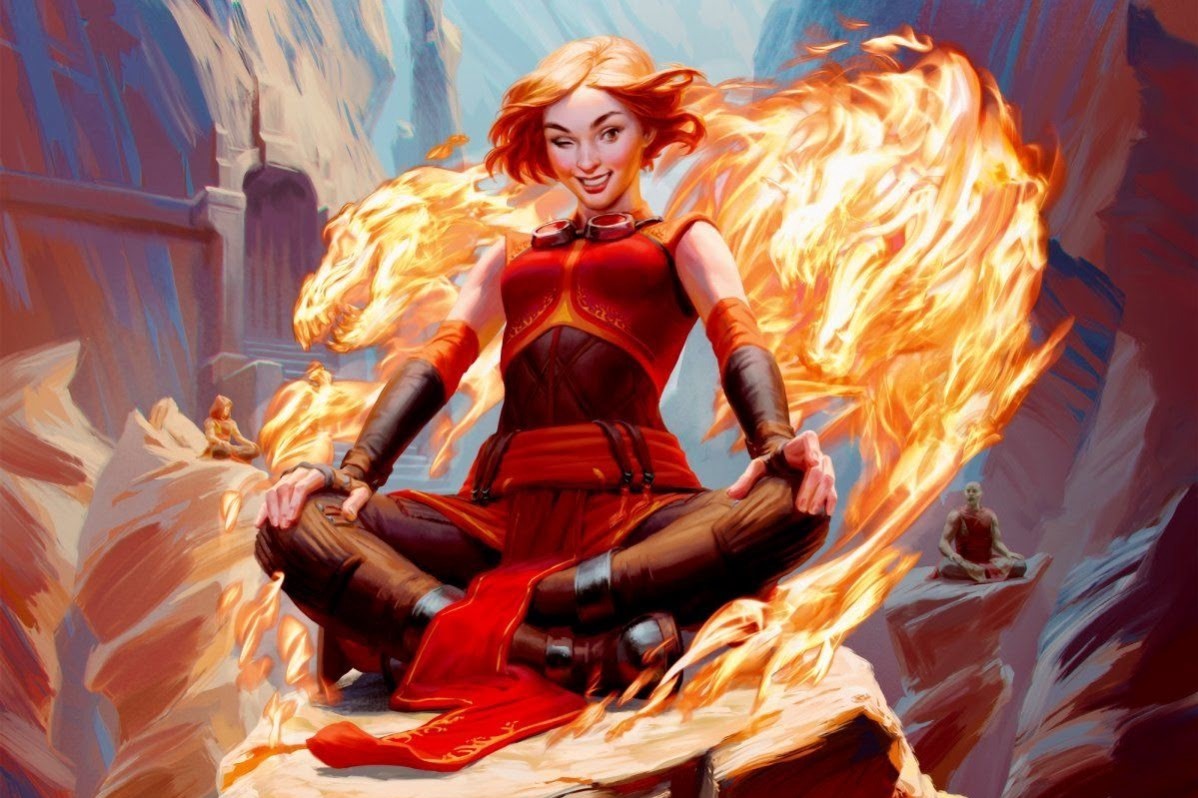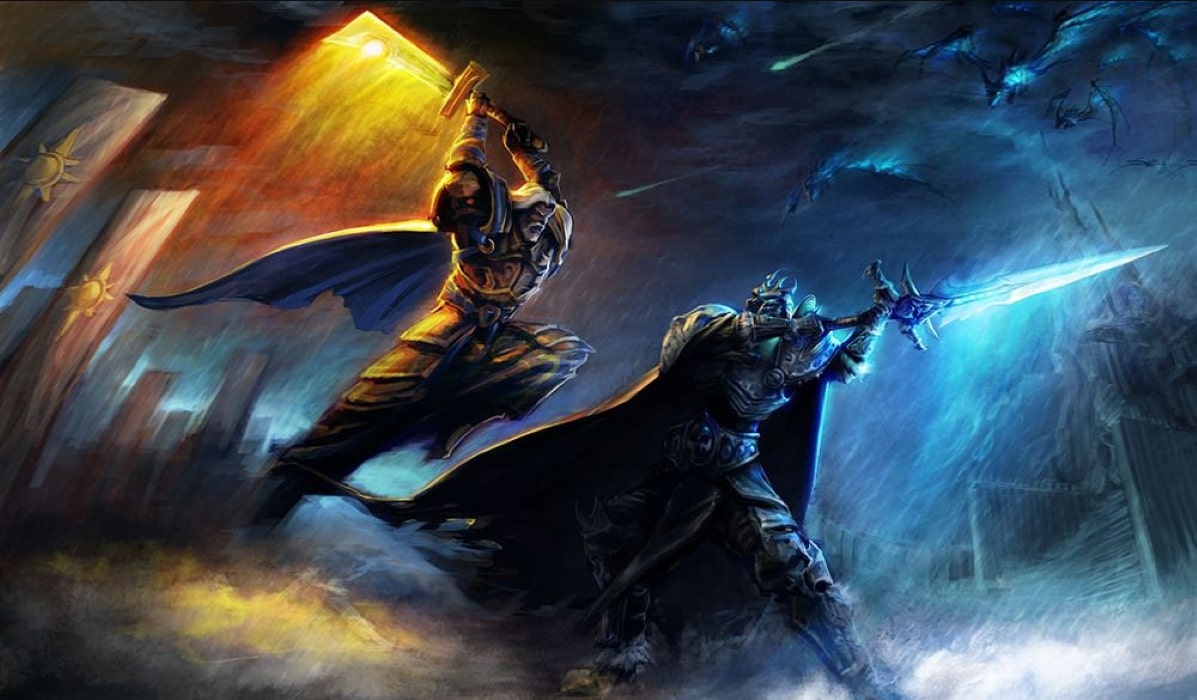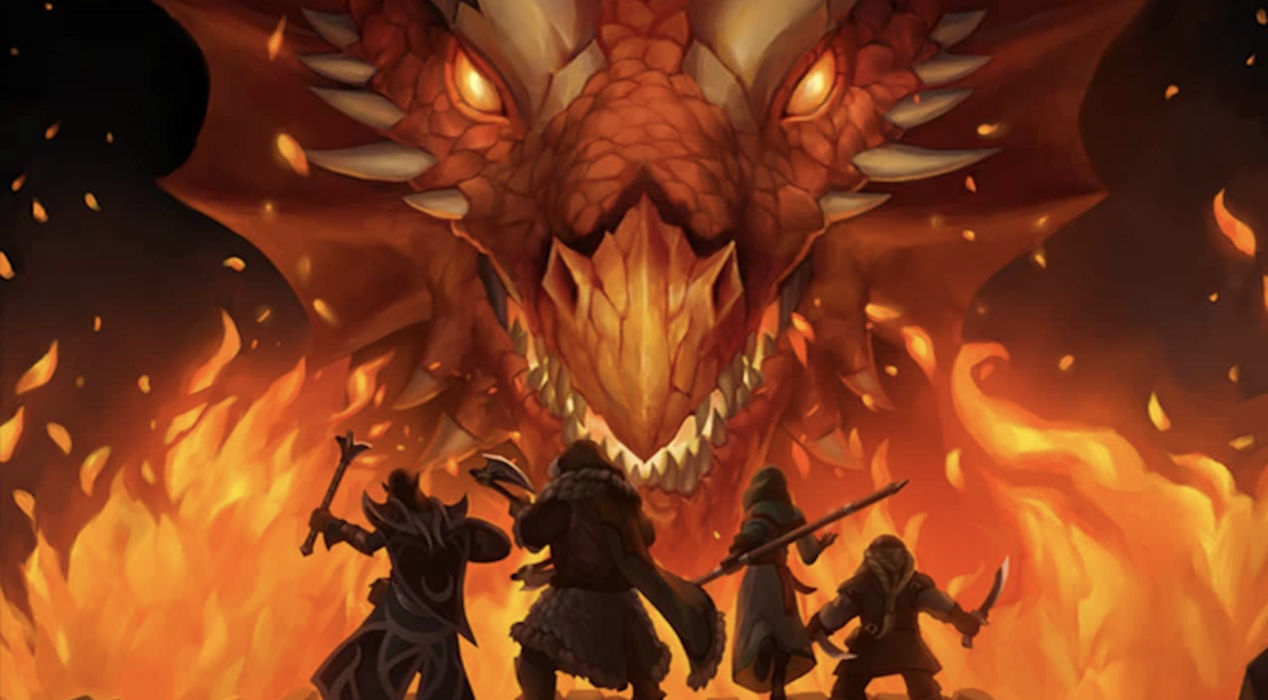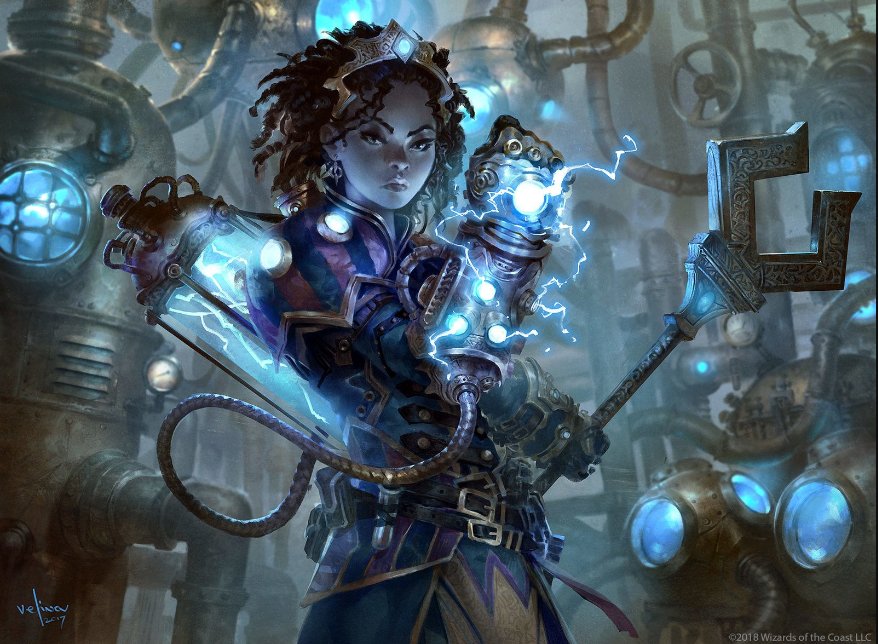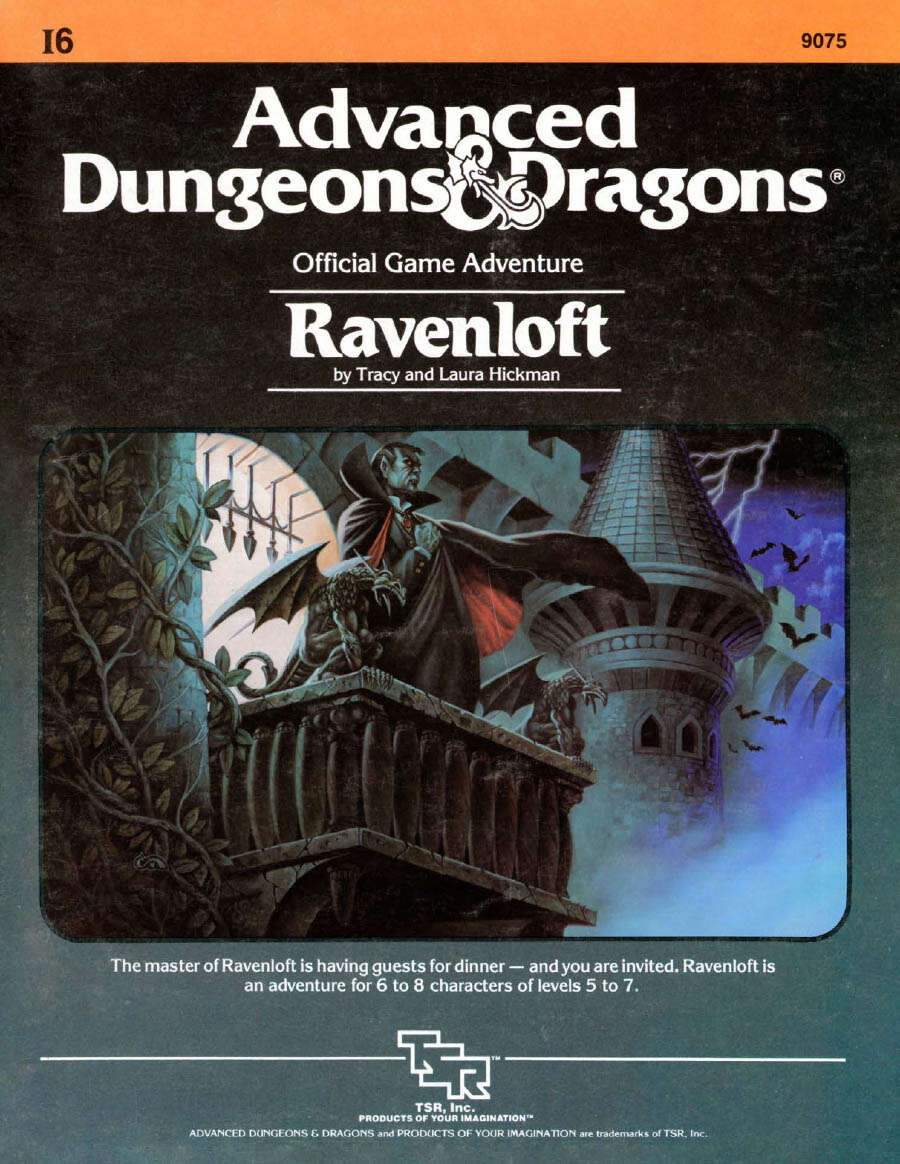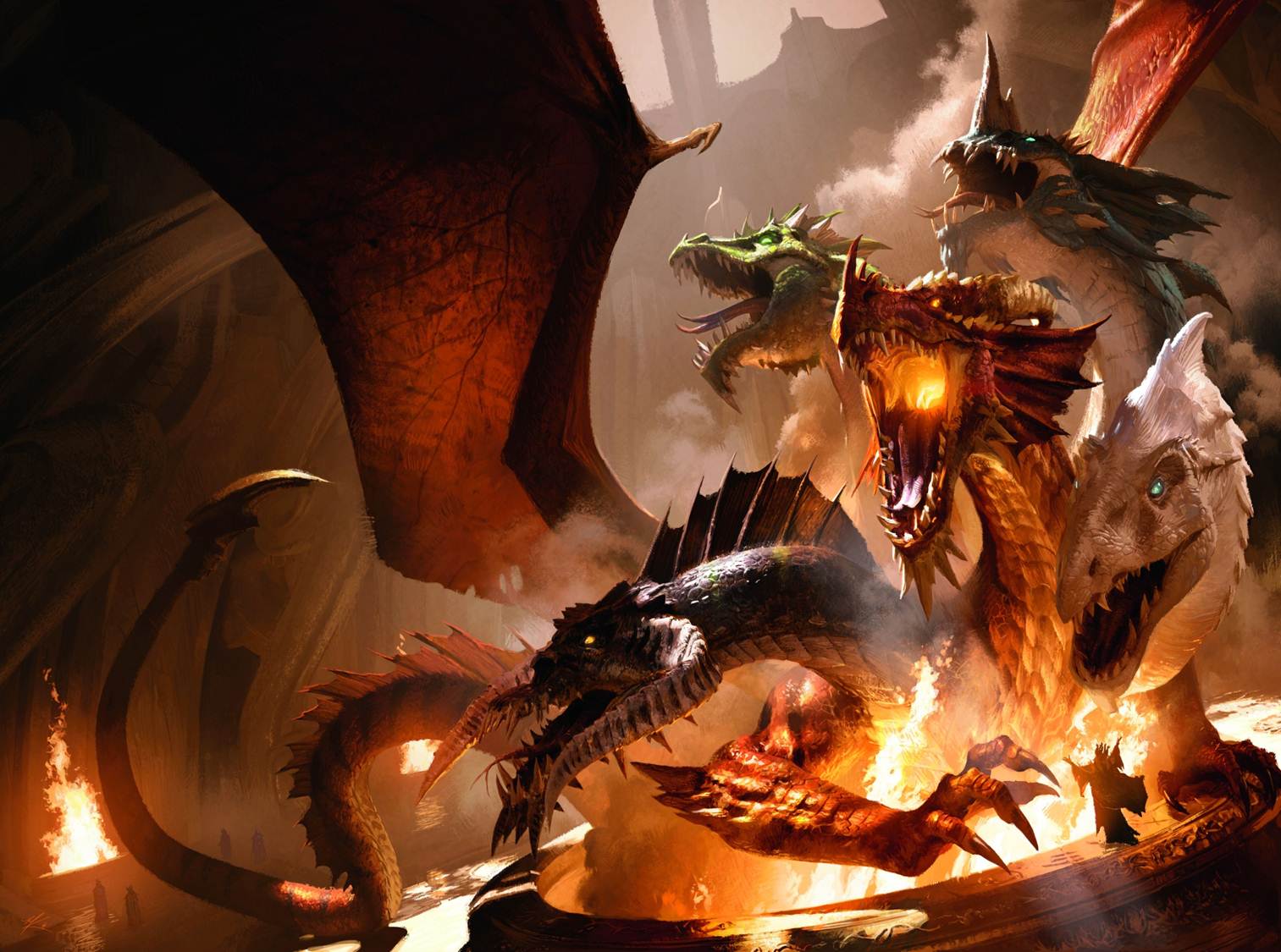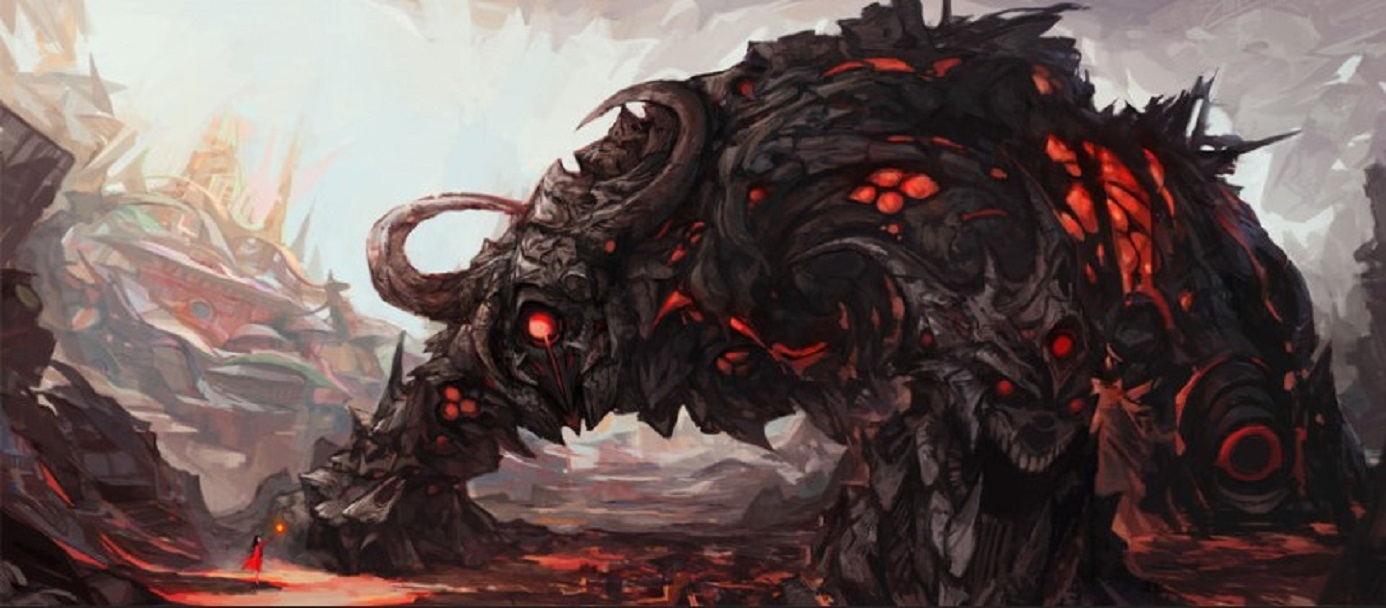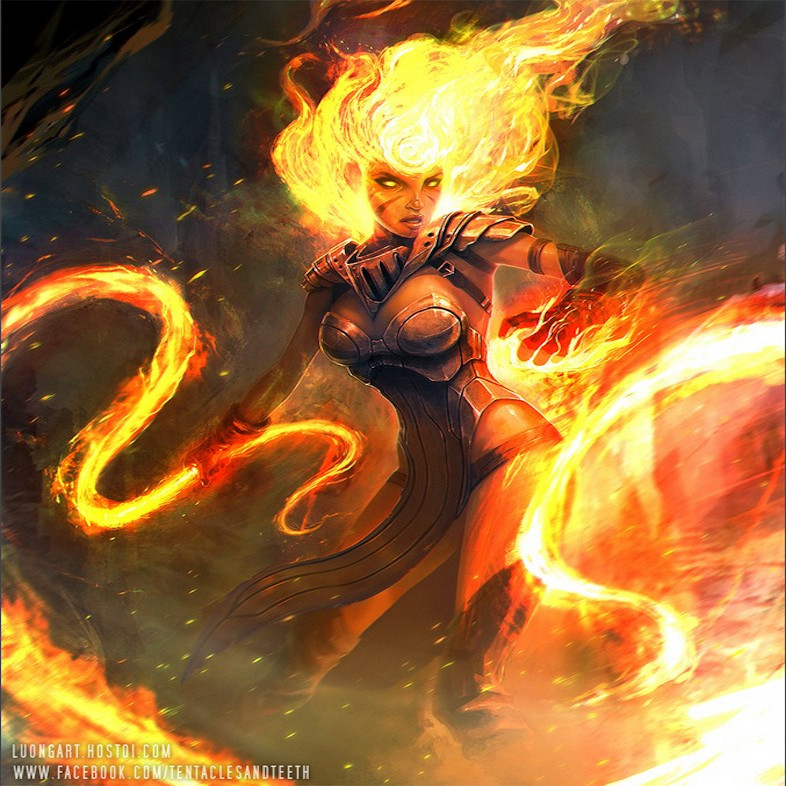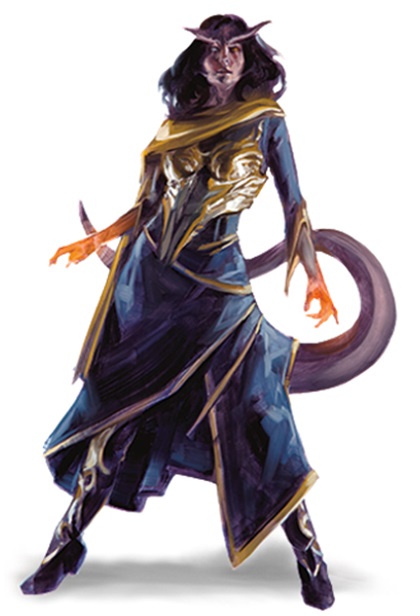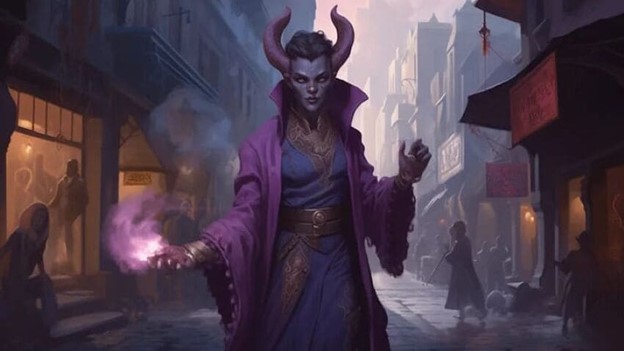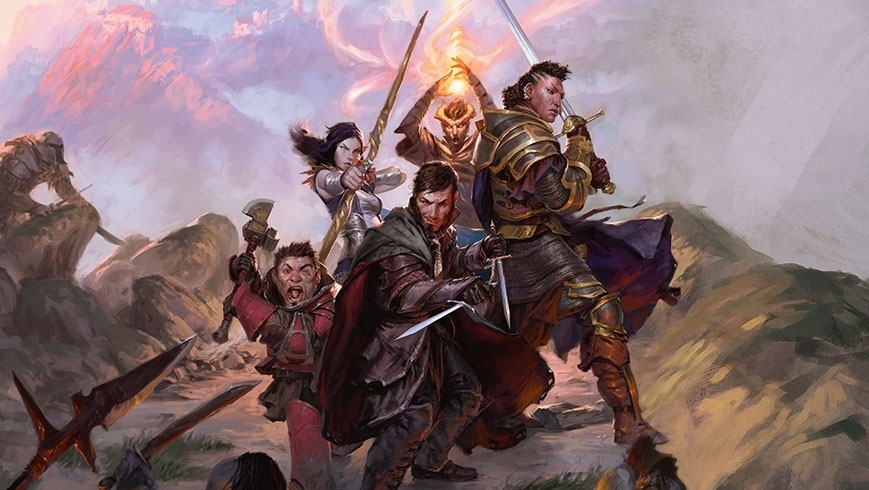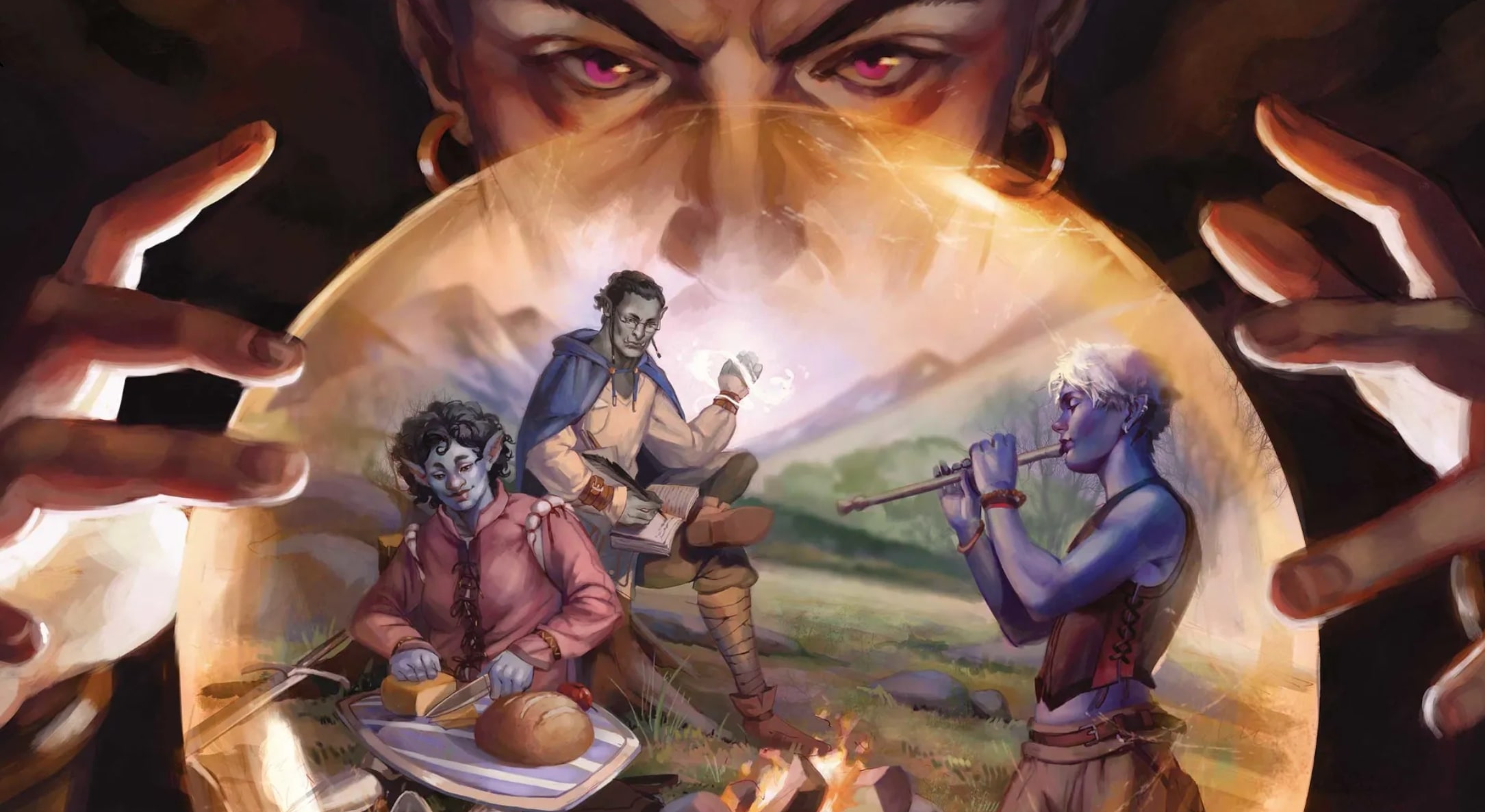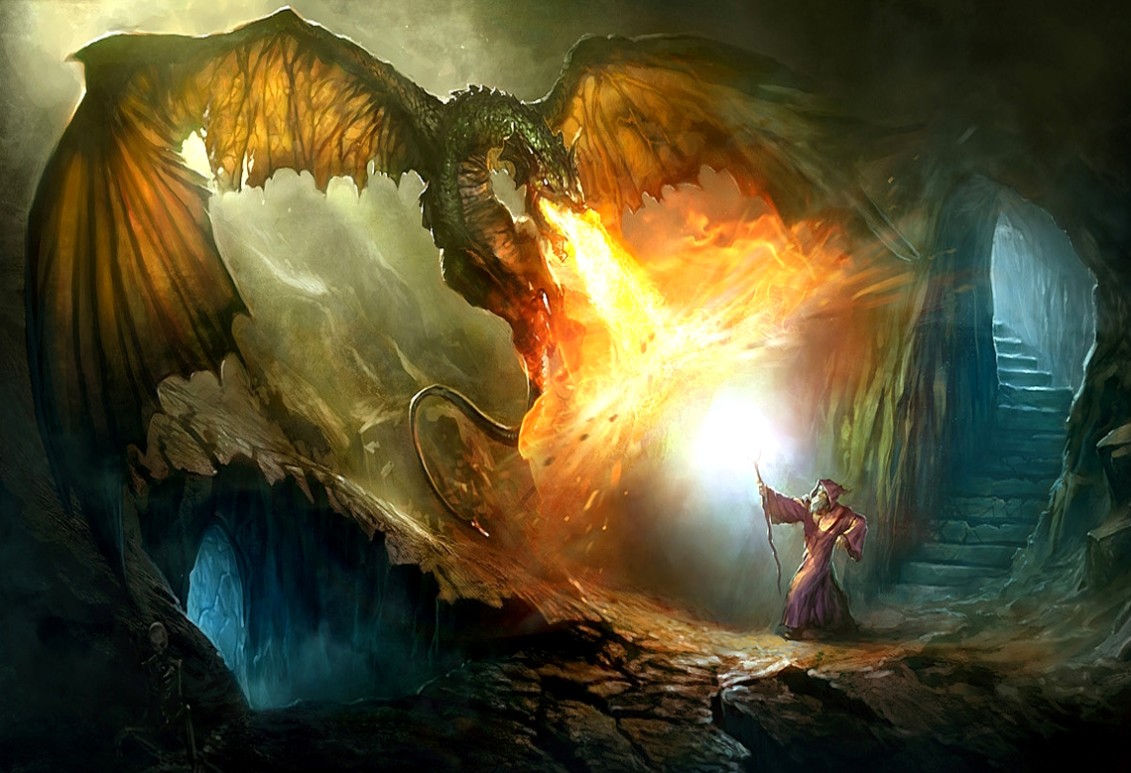
According to research, traps in a campaign are used for three reasons: diversion, damage, or total party kill (otherwise known as TPK). Hopefully, your DM’s motives are the first two reasons! Based on research and gameplay, here are 15 stellar traps that can be used in RPGs.
15. Cave Fisher

Cave Fishers are usually in a crabby mood...
The first trap mentioned in this article is a monster! If a lobster and a spider had a baby, it would be a Cave Fisher. This monster literally goes on a fishing expedition, and its victims, including player characters (PCs), are the prey. Much like spinning a web, this carnivorous creature shoots filament out of its long snout to snare and devour almost anything. Read on to find out more about using the Cave Fisher as a trap!
Why Is Cave Fisher Fun
- DMs can simultaneously combine a trap and encounter with a monster!
- There are a lot of caves and ledges in dungeons; therefore, there are a lot of opportunities to encounter a Cave Fisher.
- The filaments are difficult to see and the Cave Fisher literally reels in whatever is on the line.
Cave Fisher details:
- A detect snares and pits spell will make the filament visible.
- It takes a +1 or greater weapon to slice through the filaments.
- The larger the party, the less likely the Cave Fisher will attack. (This is yet another example of why PCs should travel in packs.)
14. Collapsing Roof

The roof, the roof, the roof...is collapsing on us!
To a homeowner or renter, a collapsing roof would not be good at all, but to a DM, this can be a fun trick to play on PCs! The Collapsing Roof involves a 3-foot tripwire that is affixed to supports on a shaky part of the ceiling. When PCs hit the trip wire, the supports crumble, and the roof falls. Keep reading to find out how the Collapsing Roof is a great trap to use in a gaming adventure!
Why Is Collapsing Roof Fun
- All the PCs must do is look up at the ceiling to discover that there is damage. It will be fun to determine if the party is perceptive or experienced enough to notice a trap.
- This will be a fun opportunity for the rogues in the party to try out their mad skills!
- The trap could be good to use in any place that has a roof, whether it is in an inn, an old castle, or a cavern. (On low level adventures, DMs may want to have healing potions scattered nearby.)
Collapsing Roof details:
- If the trap is activated, PCs must succeed on a Dexterity 15 saving roll or take (4d10) bludgeoning damage. Those who make the roll take half damage.
- The Collapsing Roof is considered as a mechanical trap.
13. Duplicate Mirror

A mirror image!
Mirrors are not only great to use in fun houses but are also fun to have in adventures! In the case of the Duplicate Mirror trap, when a PC investigates the mirror, a duplicate of the PC is created in the reflection. Then, the duplicate will emerge from the mirror and start attacking the
PC and the rest of the party. Read on to find out more about why a Duplicate Mirror is a useful trap to behold!
Why Is Duplicate Mirror Fun
- A fun fact about this trap is that the duplicate that comes out will have the opposite alignment of the original PC! (Unless your PC is a true neutral, that will pose a problem. Even then, your duplicate will still attack.)
- It will be interesting and confusing to see a PC attack its identical twin and other members of the party.
Duplicate Mirror details:
- The Duplicate Mirror is also known as the Hall of Mirrors.
- The duplicate will have all the attributes and items that the PC has.
- Check with your DM to see if a Detect Magic Spell can seek out the Duplicate Mirror.
12. Falling Net
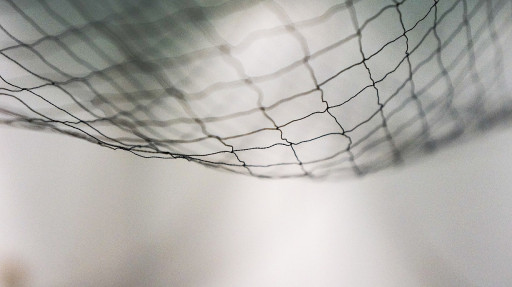
It's easy to get tied up in this trap!
Much like the Collapsing Roof, a three- foot trip wire is rigged. When the PCs or monsters trigger the trap, the net will fall from the ceiling and cover the party! This is a great trap to use for lower-level adventurers who do not have a lot of hit points to spare. Read on to find out how Falling Nets are used as a great trap in a campaign!
Why Is Falling Net Fun
- Fortunately for the PCs, the Falling Net does not usually cause damage. (However, it will alert the creatures that set the trap and they could cause damage.)
- The description of the Falling Net could be creative and fun for the DM, as it could be covered by any material such as leaves or webbing.
- A successful DC Dexterity roll by a rogue using thieves’ tools can break the trip wire without releasing the trap.
Falling Net details:
- The Falling Net is considered as a mechanical trap and covers a 10-foot area.
- If the trap is triggered, PCs need to use a DC Strength check of 10 to free oneself or others from the net.
- The net is treated like a monster in a sense, as it has an armor class (AC) of 10 and 20 hit points.
11. Fire-Breathing Statue
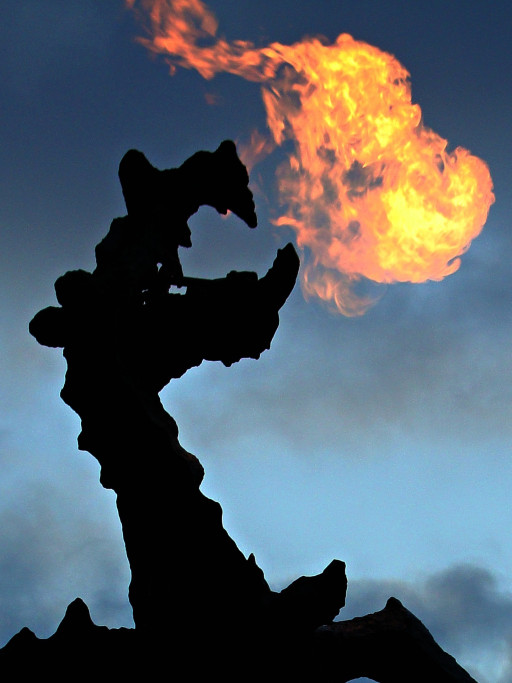
Look out!
When PCs enter a room, there can be one or many statues. Like many other traps, there is a pressure plate located on the floor in the room. When more than 20 pounds of pressure are on the plate, this causes the statue to emit 30 feet of fire. Read on to find out how this statue can be used as a fiery trap!
Why Is Fire-Breathing Statue Fun
- This can be fun because the DM can be creative with the types of statues used to create the trap!
- PCs can detect this fiery trap or other evidence of a trap with a DC of 15. It will be fun for DMs to see if the party avoids the trap!
- This statue is a magical trap as opposed to a mechanical one.
- The pressure plate can be adjusted so that the trap will not work.
- If the PCs are caught in the fire zone, they must make a Dexterity save of 13 or take full damage 22 (4d10). If they save, PCs will take half damage.
10. Greased Slide

Have a nice trip, see you next fall...
The Greased Slide is an effective and slippery trap that DMs can use in an adventure! The object of this trap is not to injure or kill the PCs, but to use as an obstacle to the PCs’ progress without necessarily causing damage. Read more to find out why the Greased Slide is a good trap to use in adventures!
Why Is Greased Slide Fun
- It can be a DM’s message to PCs that they need to slow down and find a way to get past the trap safely.
- Good for taking up time and other resources that the PCs must expend to get past the trap.
- A good trap to use when the PCs are chasing someone – or being chased themselves!
Greased Slide details:
- This is a simple mechanical trap that can be of any size.
- Rogues can use thieves tools to detect traps.
- It could lead to a deeper, more dangerous part of a dungeon or monster lair.
- Does not cause much damage except for falling but could have nasty spikes or acid at the bottom for extra damage.
9. Magic Mouth
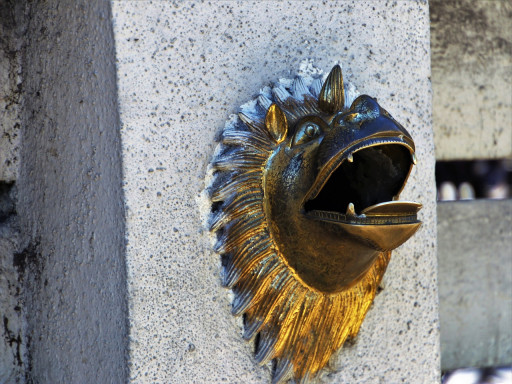
A conversation starter!
If the party likes to solve riddles or mysteries, this is a fun trap to use! When PCs enter a room, they are surrounded by a circular wall of flames. Then, a Magic Mouth appears in the middle of the floor and asks each PC a question. If the PC answers the question correctly, the flames will disappear. If the question is not answered correctly, the flames will close in on the party. After a round or two, the party starts taking damage. Read on to find out more about the Magic Mouth!
Why Is Magic Mouth Fun
- Magic Mouth is a great trap for PCs to use logic to figure out the riddle.
- This can be also a puzzle to figure out what makes the Magic Mouth Speak.
Magic Mouth details:
- This is considered as an illusion spell.
- It would be up to the DM’s discretion if magic-users can use a Detect Magic or Dispel Magic spell.
- DMs can use an improvising damage table to determine the amount of damage.
- The D&D Dungeon Master’s Guide has a range of 1d10 to 24d10 based on the severity of the fire.
8. Magnetic Ceiling
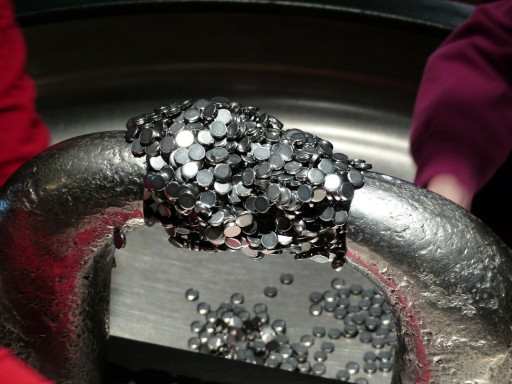
Dancing on the ceiling...
Imagine the PCs are all in a room, when suddenly, the trap is sprung and anyone wearing or holding metal will spring to the ceiling! Because most players have metal armor and/or weapons, this will be a fun trap for DMs to set for PCs. Read on to find out more about the magnetic allure of this trap!
Why is Magnetic Ceiling Fun
- This is a fun trap, especially to use on lower-level PCs, because there does not have to be any damage incurred.
- A Wisdom check of DC 15 is needed for PCs to detect the trap.
Magnetic Ceiling details:
- A dispel magic spell will be able to disable the trap.
- This trap can be triggered with a switch or when PCs step on a plate with 10 or more pounds of metal.
- The Magnetic Ceiling will automatically deactivate when the creature wearing metal steps away from the area.
7. Pit Trap

Watch your step!
Mechanical traps, like the Pit Trap, are used often in D&D 5e adventures. These traps can be covered or uncovered, and there can be spikes or creatures (such as poisonous snakes) at the bottom of the pit. The deeper the pit, the more damage a character may take. Read more to find out why Pit Traps are great to have in campaigns!
Why Pit Trap Is Fun- The Dungeon Master can plan if a Pit Trap is intended to be a setback (an inconvenience), dangerous (wounding), or deadly (killing).
- Creativity is also involved with planning the type of Pit Trap, as there are a lot of options!
- The fun for the party and the Dungeon Master is that the Pit Trap is an obstacle that the players must overcome.
Pit Trap details:
- According to research, there are four types of Pit Traps: Simple Pit, Hidden Pit, Locking Pit, and Spiked Pit.
- Players who fall into a Spiked Pit take both falling and piercing damage.
6. Poison Darts
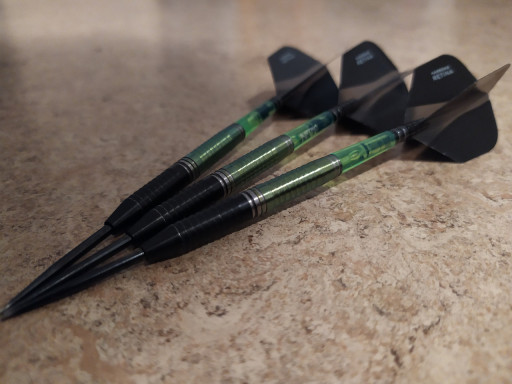
The character might become a pin cushion!
Poison darts are common yet effective traps for hapless travelers! When a PC or monster walks over a plate with 20 pounds or more of pressure, four poison darts will be triggered and shot from a source (usually a wall). There will always be some damage from this trap, and if PCs do not make their saving throws, could prove deadly. Read on to find out why poison darts are an effective and fun obstacle for game play!
Why are Poison Darts Fun
- This will be a fun way to engage in problem-solving, as PCs can find ways to stop the trap from triggering or discover it.
- PCs who make successful intelligence checks (DC 15) will be able to detect the trap; they will note that there is discoloration in the stones or other flooring where the square is. (Inspiration points could be given to players who successfully disarm or work around this trap!)
Poison Darts details:
- Poison darts are considered as a mechanical trap.
- PCs automatically take 2(1d4) piercing damage and must make a Constitution save of 15 or take 11(2d10) of poison. If the saving throw is made, the PC will take half damage.
5. Poison Needle
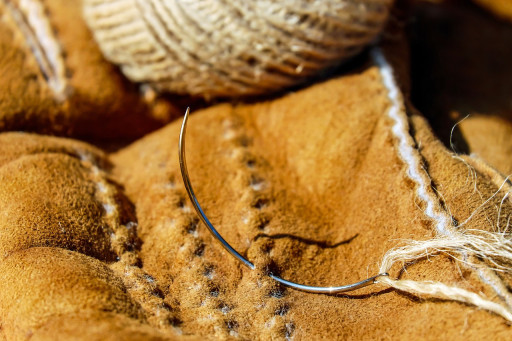
A good reason to wear gloves!
A poison needle trap is commonly used to guard treasure chests and the trap is usually set in the lock. Unless a player successfully checks for traps and/or removes the trap, a long needle, laced with poison, will shoot. A finger will be pricked and unless the player makes a successful save against poison, there will be damage or death! Read on to find out more about the poison needle trap.
Why Is Poison Needle Fun
- This is a fun way for Dungeon Masters to determine how perceptive party members are, especially when finding treasure.
- Rogues can gain useful experience by detecting and removing traps.
Poison Needle details:
- The player who sets off the trap will take one hit point of piercing damage and 11 points (or 2d10) poison damage. Also, he or she must roll a Constitution saving throw of 15 or higher or suffer poison for an hour.
- An Intelligence check of 20 will detect that there is a trap.
- Whoever attempts to remove the trap must roll a 15 Dexterity check or the trap will be sprung.
4. Rolling Sphere
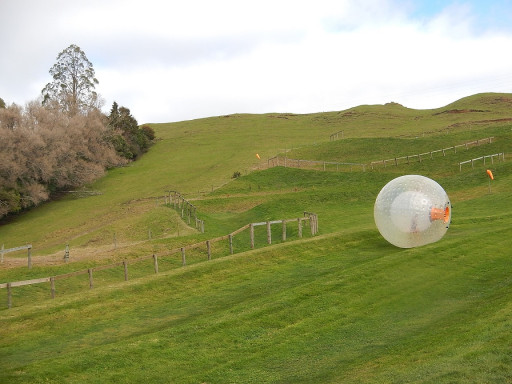
Get out of the way!
“Like a rolling stone” comes to mind when I think of this trap! Basically, there is a trigger under the pressure plate. When 20 pounds or more of pressure is applied to the plate, a trapdoor opens, and a 10-foot diameter stone will be released from the ceiling and roll towards the PCs or monsters. Read more to find out about the Rolling Sphere!
Why Is Rolling Sphere Fun
- PCs can take serious bludgeoning damage (10d10) if they do not meet the Dexterity saving throw.
- The DM can see how the party will avoid activating the trap and/or avoid damage.
- The Rolling Sphere is a mechanical trap.
- Anyone within 5 feet of the sphere can roll (must have DC 20 Strength) to see if it can be slowed down or eventually stopped. Every time a Strength roll is successful, the sphere is slowed by 15 feet.
- The Sphere and the PCs will roll for initiative; the Sphere has an advantage of +8 and can move up to 60 feet in one turn!
3.Sphere of Annihilation

Works well as a garbage disposal...
Also considered as a wondrous item, the Sphere of Annihilation is a magical trap. This is a magical field consisting of a dark, two-foot diameter black hole in the multiverse that rests in the mouth of a stone face. Except for an artifact, anything and anyone passing through the mouth will be destroyed.
Why Is Sphere of Annihilation Fun
- DM’s can find out how cautious or reckless the PCs are when approaching this trap.
- According to the Dungeon Master’s Guide, “some versions of the trap include an enchantment placed on the stone face, such that specified creatures feel an overwhelming urge to approach it and crawl inside its mouth.” DMs can add another element of difficulty to this trap.
Sphere of Annihilation details:
- The Sphere of Annihilation can be easily removed by a dispel magic spell (DC 18).
- Observant PCS who score a DC 20 Intelligence check will detect that the Sphere of Annihilation exists.
2. Teleport Doorway

A doorway to another world!
If the DM wants to redirect the party to another part of a castle or dungeon to keep the adventure interesting, he or she can use the Teleport Doorway trap. Basically, when PCs open a door, they are automatically transported. Keep scrolling to find out why the Teleport Doorway is an effective trap to use in your next gaming adventure!
Why Is Teleport Doorway Fun
- The trap itself does not necessarily cause damage, but the DM can have a blast relocating the party to a different part of the dungeon where there are monsters and other dangers waiting for them!
- It can move the PCs to a place that may normally be impassable.
- If the DM uses Teleportation Circle, which is a 5th level conjuration spell, he or she can make the Teleport Doorway take the PCs to the same location.
- It is up to the DM’s discretion, but spellcasters could use a Detect Magic or Dispel Magic before opening the door.
1. Web of Flames

It's getting hot in here...
Finally, we have the Web of Flames! This is a devious trap that a DM can use to capture PCs.
Magical webs spring out and affix the PCs in place, then shortly afterwards, a fireball spell effect fills the area! Read on to find out why this is an awesome trap!
Why Web of Flames Is Fun
- The DM can tailor the amount of fire damage to the level of the party.
- Players can take pride in their ability to defeat or escape most of the damage from such a complex trap.
Web of Flames details:
- Since this is a magical trap, DMs may allow magic-users to use a Detect Magic or Dispel Magic spell to discover and/or disable this trap.
- Some mechanical trigger activates the trap – a lever or pressure plate.
- A delay for the fireball may give the PCs a chance to escape!

